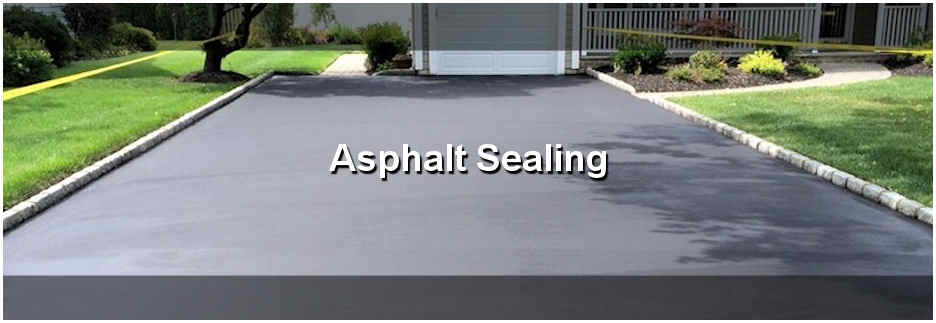Elevate Pavement Performance: Cold Mix Asphalt Sealing Tactics
Wiki Article
Cold Mix Asphalt Vs. Hot Mix Asphalt: Which Is Right for You?

Make-up Distinctions
Cold mix and warm mix asphalts vary substantially in their composition, with unique characteristics that influence their efficiency and applications. Cold mix asphalt is generated by emulsifying the asphalt binder with water and an emulsifying agent before mixing it with aggregate. This method permits the asphalt to be practical at lower temperature levels, making it optimal for short-lived repairs and for use in cooler weather. Warm mix asphalt, on the various other hand, is made at high temperatures, usually in between 300-350 ° F, which helps to accomplish far better compaction and a much more long lasting end product. The warm mix asphalt production process entails warming the aggregate and asphalt binder separately prior to incorporating them at the asphalt plant.
Additionally, cold mix asphalt often tends to be less thick and more flexible than warm mix asphalt. This adaptability makes it far better suited for locations with greater degrees of movement, such as driveways or roadways with rush hour. In contrast, warm mix asphalt is understood for its high toughness and resistance to rutting and splitting, making it a recommended selection for freeways and high-traffic roadways where longevity is important.
Installation Process Differences
The procedure of installing cool mix and warm mix asphalt displays remarkable variances in their procedures and requirements. Cold mix asphalt, being a more flexible product, can be used straight from the bag or container onto the fracture or damaged location. It requires marginal preparation work, such as cleansing the area and compacting the cool mix with hand devices. This makes it a convenient choice for fast and temporary fixes. In contrast, hot mix asphalt requires an extra elaborate installation procedure. It entails heating up the mixture to high temperature levels prior to laying it down on an effectively ready base. The preparation includes compacting the base, using a tack layer, and utilizing heavy machinery like pavers and compactors for a durable and smooth finish. As a result of the heating needs, hot mix asphalt installations are commonly executed by specialists with specialized devices, making certain a more permanent and structurally audio result.Sturdiness and Long Life Elements
When thinking about asphalt alternatives, resilience and longevity are vital factors to evaluate for long lasting sidewalk performance. Hot mix asphalt (HMA) is known for its phenomenal durability and longevity.
In regards to longevity, HMA usually exceeds CMA because of its superior toughness and resistance homes. HMA pavements have a longer solution life, requiring much less frequent repairs and maintenance, which can equate to cost financial savings in the future. In addition, HMA sidewalks are a lot more quickly customizable to meet details job requirements, additionally enhancing their durability.
Price Factors To Consider
Taking into consideration the economic ramifications is a crucial element when evaluating the option between hot mix asphalt (HMA) and cool mix asphalt (CMA) for pavement jobs. While the first price of hot mix asphalt is normally greater than that of cold mix asphalt, HMA commonly provides a much more affordable solution in the long run due to its superior durability and durability.In addition to material expenses, it's vital to take into consideration the expenses linked with setup and maintenance when comparing HMA and CMA. Inevitably, the choice in between HMA and CMA need to take into account not just the initial expense but likewise the lasting financial implications to figure out the most cost-efficient choice for the particular pavement project.
Environmental Effect Contrast
Comparison of the environmental impacts between hot mix asphalt (HMA) and cool mix asphalt (CMA) exposes distinctive distinctions in sustainability practices. HMA production needs high temperature levels, leading to boosted power consumption and greenhouse gas exhausts.In addition, the usage of CMA frequently involves recycling existing asphalt pavement, advertising source preservation and lowering the quantity of waste sent to landfills. By opting for CMA over HMA, road building tasks can contribute favorably to environmental preservation efforts.
Verdict
To conclude, the option between cool mix asphalt (CMA) and warm mix asphalt (HMA) depends upon different variables such as structure, installation process, durability, longevity, expense, and environmental impact. cold mix asphalt. While CMA offers a affordable and fast option for small repair services, HMA ensures exceptional durability and durability for heavy traffic areas. Think about these elements very carefully to determine which kind of asphalt is the ideal angle parking option for your paving requires

Considering the economic ramifications is an important aspect when reviewing the choice in between hot mix asphalt (HMA) and cold mix asphalt (CMA) for sidewalk tasks. While the preliminary expense of hot mix asphalt is generally greater than that of chilly mix asphalt, HMA typically offers a more cost-efficient remedy in the long run due to its exceptional toughness and durability. asphalt repair.Contrast of the environmental influences between hot mix asphalt (HMA) and chilly mix asphalt (CMA) reveals distinct differences in sustainability methods.In conclusion, the option in between chilly mix asphalt (CMA) and warm mix asphalt (HMA) depends on various variables such as structure, installation procedure, longevity, long life, cost, and ecological effect
Report this wiki page